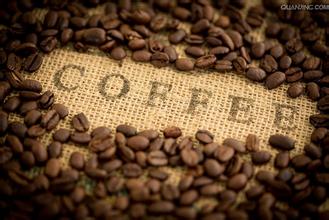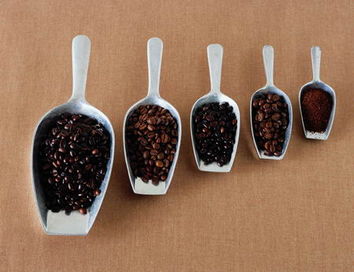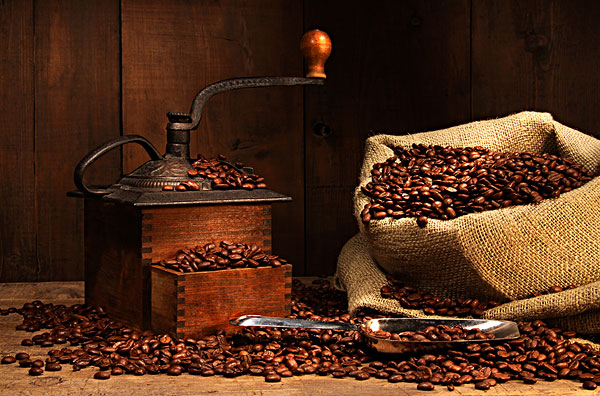Coffee producing areas three continents: a detailed introduction of coffee beans in African producing areas
African Africa
As the birthplace of coffee, African coffee plays an important role in the whole coffee industry. Although the commercial cultivation of coffee has been developed around the world for hundreds of years, the unknown wild coffee varieties in Africa are still the greatest treasure in the hearts of coffee researchers. African coffee is generally characterized by strong aroma and charming acidity, its sour brightness is lively and exhilarating, but the mellow African coffee is often slightly thin and the sweetness is not very prominent. African coffee mostly uses dry method to treat raw beans, the shape of beans is often uneven and beautiful, and the defect rate is high.
Ethiopia (Ethiopia) aroma 5 minutes brightness 4.5 minutes mellow 5 points flavor 4.5 points aftertaste 4.5 points
Suitable for baking: Light/Medial/City shallow baking to city baking can be, if the emphasis on fruit and flower aroma, then must use shallow baking, or even before the end of the explosion can stop baking (Yirgacheffe)! If you want to emphasize the flavor or mix it with the espresso formula, you can bake until you have just entered the second explosion, which will provide you with a thicker flavor, and both Hidamo and Harald are suitable for use in this situation.
According to historical records, Ethiopia is the birthplace of coffee. In the 6th century AD, shepherds in the town of kaffa became excited when they found sheep eating certain red fruits, so they picked the red berries that grew on trees and ate them. This picking opened the door to coffee all over the world, and its influence remains undiminished. Coffee is grown in Ethiopia on a plateau above 1500 meters above sea level, and the seven Harald highlands are home to Arabica coffee. At present, there are many native forests of coffee in Ethiopia, which can be said to be a coffee gene pool, which will be the solution to many coffee problems. Ethiopian coffee beans are of high quality and have a wide variety of flavors, and few countries are second to none. As for the treatment of raw beans, some are solarization, others are washing, and both are used (such as Hidamo, Sidamo), which is partly because of the diversity of Ethiopian flavors. Djimmah in the west, Hidamo in the middle and Harald in the east are the three major producing areas of Ethiopia, the most special of which is Yirgacheffe in Hidamo province, which combines the aroma of fruit, flowers and honey, and the tea-like flavor is memorable, which is the starting point for many people to enter the boutique coffee. Of course, Gemma's wild taste and Harald's unique wine aroma also drive many coffee fans crazy. Ethiopian coffee varies greatly from batch to batch, so pay attention to the batch number when buying, indicating that the taste of two bags of coffee in the same producing area may differ by 108000 li. In addition, Ethiopian coffee is usually harvested earlier, which is different from coffee in many other regions.
Yemen (Yemen) aroma 4 minutes brightness 4 minutes mellow 3 minutes flavor 4.5 points aftertaste 5 points
Suitable for baking: City/Full city is suitable for everything from city to full city. Lighter baking will highlight the sun and spice, while deeper baking will make dark chocolate and smoky taste more intense. It should be noted that because the beans are relatively small and there is a big difference in particle size, we should pay attention to the problem of stuck beans when using a drum roaster.
Yemen is located in the Arabian Peninsula of the Asian continent, across the Red Sea and Africa, generally classified as African beans. When it comes to Yemen, what most people think of directly is Mocha! As a matter of fact, Mocha is a port in Yemen. in the past, almost all the attached coffee was exported from the port of Mocha, and all mocha became synonymous with coffee and has been in use ever since. In fact, the port of Mocha disappeared long ago because of blockage! But because of traditional habits, coffee beans from many other countries (such as dried Ethiopian beans) are still marked with mocha. There are many spellings of the word mocha, such as Moka, Mocha, Mocca, etc., but Mokha is closest to the original Arabic. There are several famous producing areas in Yemen, such as San'ani, Mattari, Hirazi, Rimy, and Dhamari. These areas produce many high-quality sun beans. Because of the sun treatment, the size of coffee beans is often different, sometimes mixed with corn and other cereals. Also because it is sun beans, so the taste with the feeling of the sun and wild flavor. Generally speaking, Yemeni coffee has a unique character, wild, complex and exciting, especially the charming sour wine and deep dark chocolate taste that many people like, but some people think that Yemeni coffee beans are bitter. Anyway, this is the unique Yemeni coffee bean.
Kenya (Kenya) aroma 4 minutes brightness 4.5 minutes mellow 3.5 points flavor 4.5 points aftertaste 5 points
Suitable for roasting: City/Full City city roasting can show the best sense of balance of Kenyan coffee, as far as possible not to enter the dense second burst zone, otherwise the charming berry aroma and acidity will disappear, it should be noted that Kenya roasted when the color will be darker than other coffee beans, may have shown black between the first and second explosion Therefore, it is recommended not to use the color of coffee beans to judge the depth of coffee roasting.
Next to Ethiopia to the north, Kenya, located in East Africa, is not only a big coffee country, but also a model of the coffee industry. Kenya is world-class in terms of coffee quality and mode of operation, thanks in part to the Kenyan Coffee Bureau. The Kenya Coffee Agency is responsible for the unified purchase of all coffee, cup testing and grading of all coffee, and auction after sending samples, so the best Kenyan coffee is sold by auction every year, and the price is high because of the fierce competition among buyers. Kenya's coffee research is unparalleled in the world, with extremely strict quality control. Small coffee farmers across the country know how to grow coffee and earn a relatively high income because they understand that quality is proportional to price. Kenya's coffee grading is mainly based on the size of raw beans as the benchmark, the general market can see about AA+, AA, AB three, the average particle size of AA is larger than AB, while AA+ is a special selected version of AA, and it is also the only grade that puts the "taste" factor into the classification criteria. Because of its stable quality and excellent quality, many players think that Kenyan coffee is a worthwhile choice and is more worth buying than many expensive coffees. In general, Kenyan coffee is particularly bright because of the outstanding sour taste of fruit, and people who don't like sour taste may reject Kenyan beans. Regardless of personal preferences, good Kenyan coffee is very complex, with fruity aromas (berries, oranges or plums) or spices, clean brightness, and tastes very much like unsweetened fruit tea. Top Kenyan coffee even has a fascinating aroma that pervades the mouth. In addition, the flavor of Kenyan coffee beans is on the thick side in African beans, and there will be a real feeling in the mouth.
Zimbabwe (Zimbabwe) aroma 3 minutes brightness 4 minutes mellow 3 points flavor 4 points aftertaste 4 points
Suitable for baking: City/Full City City to Full City, but the flavor will be more complete when baked by Full city. It is recommended to leave it for three or four days before tasting.
Zimbabwe was able to grow coffee only in the 1960s, but it already has good quality, balance, complexity, texture, charming spices, excellent flavor and sweet taste, but it still takes some work to find good Zimbabwean coffee. The top coffee beans on the bag not only mark "AA" but also have the words "Code 53". Zimbabwe coffee is mainly produced in the provinces of Manicaland and Mshonaland, bordering Mozambique, while the main producing cities are Chipinge and Mutare.
Uganda (Uganda) aroma 3 minutes brightness 4 minutes mellow 4 points flavor 4 points aftertaste 4 points
Suitable for baking: Full city / Espresso is recommended to enter the second explosion, at this degree there will be a very obvious chocolate flavor, if baked a little deeper, it is quite suitable to be mixed into the Espresso formula. It takes a mature period after baking, so you will get the most complete taste after three or four days.
The Bugisu producing area in northern Uganda near the Kenyan border has excellent raw beans, and many people who have drunk Bujisu are surprised by its high quality, but Uganda has no export port because it is a landlocked country, and years of civil war in the country has caused transportation inconvenience, so the delivery of coffee is often delayed, and a large number of raw beans are exposed to the hot sun for a long time, which has a great impact on the quality. Ugandan coffee beans are exported by two major raw bean processing plants in the region (Mbale Bugisu Coffee Factory and Budadiri Coffee Factory), and the top Ugandan coffee will have the AA label. The strange thing is that the taste of Ugandan coffee is not much like that of neighboring countries (Kenya, Zambia). Instead, its heavy flavor and deep taste are a bit similar to Java coffee.
Tanzania (Tanzania) aroma 3.5 minutes brightness 4.5 minutes mellow 3 minutes flavor 4.5 points aftertaste 4.5 points
Suitable for roasting: Full city/Expresso Tanzanian coffee beans can be roasted deeper, there is no problem before and after the second explosion, if roasting round beans (Peaberry) should be especially careful, because of the shape, it is easy to heat up too fast and exceed the predetermined baking degree.
Further south from Kenya into Tanzania, Tanzanian coffee is a member of the East / Central African coffee family, mostly washed beans, so it usually has a bright and stimulating aroma. Tanzanian coffee is absolutely comparable to neighboring Kenya. However, coffee products in this country are not strictly controlled, and carelessness in many processes often destroys the classification of coffee into AA and A. generally speaking, the price of round beans is the highest, but the high price does not necessarily mean that the taste is better. Important producing areas are in the mountains near Kenya in the north, such as the Kilimanjaro Mountains (Mt.kilimanjaro) and the Meru Mountains (Mt.Meru). The taste of high-quality Tanzanian beans is similar to that of Kenyan beans, with both fruity and sour aromas in addition to the lingering aftertaste, which should not be missed by African bean lovers.

Source: Brista blog
Important Notice :
前街咖啡 FrontStreet Coffee has moved to new addredd:
FrontStreet Coffee Address: 315,Donghua East Road,GuangZhou
Tel:020 38364473
- Prev

Coffee producing areas three continents: a detailed introduction of coffee beans in Asian producing areas
When ASIA mentions Asian coffee, the first impression of coffee lovers is often calm and calm. Asian coffee is generally characterized by thick flavor, strong sweetness and round taste, but slightly flat aroma and brightness. It is precisely because of the heavy nature of Asian coffee that it is very suitable to be used as a base when making Italian coffee. Raw coffee beans in Asia are generally treated by wet or semi-wet methods.
- Next

Three continents of coffee producing areas: a detailed introduction of coffee beans in America
Latin America (Latin America) in 1721 French naval officer de Klee (Gabriel Mathieu de Clieu) experienced difficulties and obstacles to bring the first coffee sapling from Africa to the Latin American island of Martinique, which was the origin of coffee cultivation in Latin America. Because at that time, France was under the reign of the Bourbon dynasty, and Elaraby was grown in Latin America.
Related
- Guji coffee producing area of Guji, Ethiopia: Humbela, Shakiso, Wulaga
- What is the most expensive variety of Qiloso in BOP multi-variety group?
- How to store the coffee beans bought home?
- Why are Yemeni coffee beans so rare now?
- Ethiopian Sidamo all Red Fruit Sun Sun Santa Vini Coffee beans
- SOE is mostly sour? What does it mean? Is it a single bean? what's the difference between it and Italian blending?
- Is Italian coffee beans suitable for making hand-brewed coffee?
- How to choose coffee beans when making cold coffee? What kind of coffee beans are suitable for making cold coffee?
- Just entered the pit to make coffee, what kind of coffee beans should be chosen?
- Can only Japan buy real Blue Mountain Coffee? What are authentic Jamaican Blue Mountain coffee beans?

